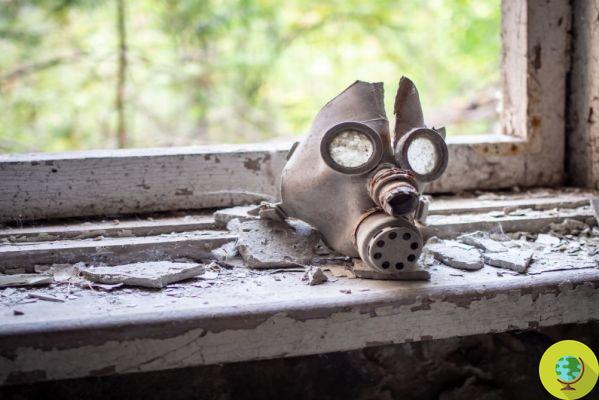
Mushrooms Growing at Abandoned Chernobyl Nuclear Power Plant Can Use Nuclear Radiation to Produce Energy
You know there are species of mushrooms able to use radiation to produce energy?
These mushrooms intrigued researchers as early as 1991, when they sent a remotely piloted robot to the creepy rooms of the abandoned Chernobyl nuclear power plant.
On that occasion, they noticed the presence of various mushrooms growing on the walls of the nuclear reactor # 4 and that, apparently, they were destroying the radioactive graphite. The fungi also seemed to grow towards the sources of radiation, as if attracted to them.
Several years later, in 2007, Professor Ekaterina Dadachova of the University of Saskatchewan together with her team studied some specimens of Cladosporium sphaerospermum, Cryptococcus neoformans and Wangiella dermatitidis, three species of mushrooms present in the reactor, discovering their ability to grow faster in environments rich in radiation compared to other species of mushrooms.
The three species had in common the fact of possessing large amounts of melanin, the pigment that is also found in our skin to protect it from solar radiation. In fact, melanin is known for its ability to absorb light and dissipate ultraviolet radiation.
The researchers found that the melanin present in the mushrooms was capable of absorb nuclear radiation and convert them into chemical energy useful for their growth, perhaps in a similar way to what happens in plants, which use chlorophyll to obtain energy in the process of photosynthesis.
I Chernobyl mushrooms they are not the only living species to love nuclear radiation: this characteristic was in fact also found in other highly melanized species found in the first deposits of the Cretaceous period.
This raises an intriguing possibility: there may be places in the universe colonized by organisms rich in melanin, capable of thriving in highly radioactive environments.
To learn more about Chernobyl fungi, researchers from the Jet Propulsion Laboratory sent eight species collected from the area to the International Space Station (ISS) in 2016 to observe their behavior. The ISS environment in fact exposes humans to radiation between 40 and 80 times higher than that found on Earth. The results of this experiment have yet to be published.
The hope for the researchers is to be able to obtain useful molecules from mushrooms to be administered to astronauts for protect them from radiation to which they are exposed during missions.
In any case, it is interesting to know that wherever there is energy, life is able to find a way to use it.
Sources of reference: Journals Plos / Nature / Real Clear Science
Read also:
- Reactor 4 of Chernobyl opens to tourists: you can visit the control room with a suit and a mask
- Atomik: Scientists produce the first vodka with water and Chernobyl wheat
- The dangerous and sinister fashion of taking selfies in Chernobyl to post them on Instagram


























